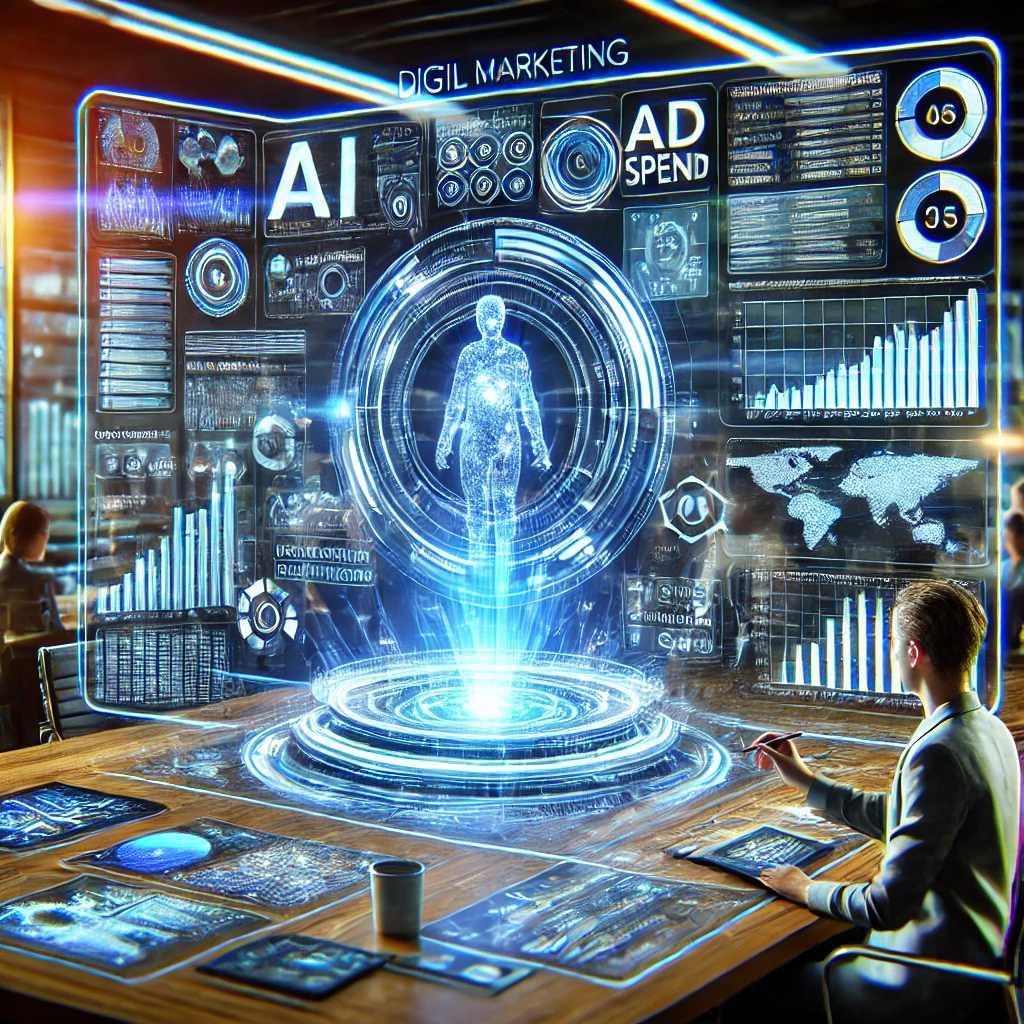In the rapidly evolving world of digital marketing, making data-driven decisions is no longer a luxury—it’s a necessity. Today, businesses are overwhelmed with vast amounts of data generated by customers across multiple platforms. The challenge is no longer about gathering data but making sense of it. This is where Artificial Intelligence (AI) steps in, transforming how digital marketers analyze data, understand consumer behavior, and craft smarter campaigns.
In this blog, we’ll explore how AI empowers marketers to make data-driven decisions, unlocking insights that were once impossible to uncover, and ultimately leading to more effective and efficient marketing strategies.
The Role of AI in Digital Marketing
Artificial Intelligence has become a game-changer for digital marketing by automating tasks, analyzing data, and providing insights that would be time-consuming or even impossible for humans to achieve manually. AI-driven tools can sift through vast amounts of data, identify trends, and generate predictive insights to inform decisions. From personalizing customer experiences to optimizing ad spend, AI is transforming the way marketers operate.
Here are a few ways AI is enabling data-driven decision-making in digital marketing:
1. Enhanced Data Analysis
AI’s ability to process vast datasets at lightning speed gives marketers the power to make more informed decisions. With machine learning algorithms, AI can identify patterns in customer behavior, segment audiences more accurately, and predict future actions. This helps marketers understand which campaigns are driving conversions, which audiences are engaging the most, and what content resonates with different segments.
For instance, AI can analyze user interactions on social media, websites, and email campaigns to determine the best time to send messages, which types of content will yield the highest engagement, and which channels are the most effective for specific audiences.
2. Predictive Analytics for Smarter Campaigns
Predictive analytics, powered by AI, takes data analysis a step further by using historical data to forecast future trends. This allows marketers to anticipate customer needs, personalize experiences, and stay ahead of competitors. AI models can predict the likelihood of a user making a purchase, identify potential high-value customers, and determine the optimal marketing strategy to convert leads into sales.
For example, AI-powered tools like Salesforce Einstein or HubSpot’s AI features can analyze customer behavior to predict the likelihood of a customer converting after interacting with an email or an ad. By leveraging these insights, marketers can create highly targeted campaigns that increase conversion rates and reduce wasted ad spend.
3. Real-Time Optimization
AI doesn’t just help with pre-campaign decision-making—it also enables real-time optimization during campaigns. Many AI-driven platforms, such as Google Ads or Facebook Ads Manager, use machine learning algorithms to adjust bids, targeting, and ad placements in real time to maximize performance.
For example, if an ad campaign isn't performing well, AI can automatically adjust the targeting criteria or ad creative to improve results. Similarly, AI can pause underperforming ads and shift budgets to higher-performing ones without manual intervention. This real-time optimization ensures that marketers are continuously maximizing their return on investment (ROI).
4. Improved Customer Segmentation
Traditional customer segmentation is often based on basic demographic data such as age, gender, and location. However, AI takes segmentation to the next level by incorporating behavioral and psychographic data, such as past purchases, browsing behavior, and social media interactions. This allows for more accurate and granular segmentation, enabling marketers to create highly personalized campaigns.
AI tools can analyze thousands of data points to group customers into micro-segments with similar behaviors, preferences, and needs. This allows marketers to craft personalized messages for each segment, increasing the chances of engagement and conversion.
5. Optimized Content Creation
AI is also revolutionizing content marketing by helping marketers understand what type of content works best for different audiences. Natural Language Processing (NLP) tools, like OpenAI's GPT models, can analyze large volumes of text to identify trends in customer language and preferences. These insights allow marketers to create content that resonates with their audience and ranks higher in search engines.
Additionally, AI tools can assist in content generation, such as writing blog posts, creating social media copy, or generating product descriptions. This not only saves time but ensures that the content is optimized for SEO and tailored to the audience’s interests.
6. Personalization at Scale
AI makes it possible to deliver highly personalized experiences to customers at scale. Personalization has been proven to drive engagement and conversions, but doing it manually for thousands of customers is impossible. AI algorithms can analyze user data to create personalized recommendations, product suggestions, and dynamic content in real time.
For instance, AI-powered recommendation engines, like those used by Amazon or Netflix, suggest products or content based on user preferences and past behavior. This level of personalization increases customer satisfaction and loyalty, ultimately leading to higher sales.
7. Optimizing Ad Spend
AI can help marketers optimize their ad budgets by identifying which ads are most effective and adjusting spending accordingly. AI-driven tools analyze the performance of different ad formats, platforms, and creative elements to determine which combinations generate the best results.
AI can also use predictive models to allocate budgets across channels in a way that maximizes ROI. This ensures that marketers are getting the most out of their ad spend while minimizing wasted resources on underperforming channels or ads.
Embracing AI for a Competitive Edge
As digital marketing continues to evolve, the ability to make data-driven decisions powered by AI will become increasingly important for marketers looking to stay competitive. By leveraging AI, businesses can unlock insights from their data that were previously out of reach, allowing them to create smarter, more efficient marketing strategies.
From predictive analytics and real-time optimization to improved customer segmentation and personalized content, AI offers countless opportunities for marketers to enhance their campaigns and deliver better results. Embracing AI not only streamlines decision-making but also leads to better customer experiences, increased engagement, and ultimately, higher revenue.
In the age of information overload, AI provides digital marketers with the tools they need to make sense of data, predict trends, and create personalized, data-driven marketing strategies. By leveraging AI for decision-making, marketers can gain a deeper understanding of their customers, optimize campaigns in real time, and drive better outcomes for their businesses. As AI technology continues to advance, those who embrace it will have a significant advantage in the digital marketing landscape.



0 Comment